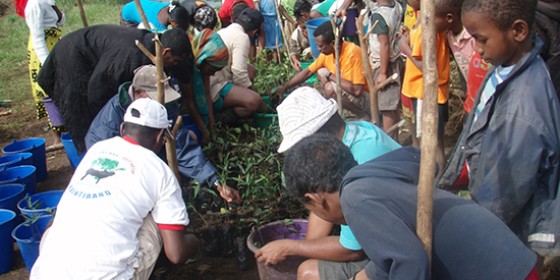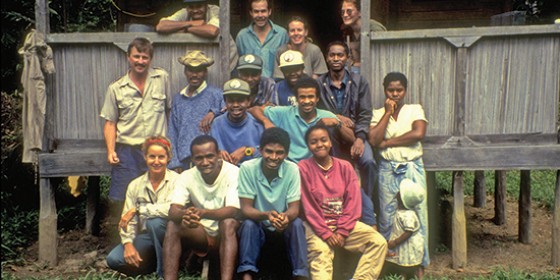Islands are some of the most richly-diverse places on Earth, home to life evolved in isolated, unique habitats. Madagascar, the world’s fourth-largest island, boasts 310 bird species in an area the size of Montana and Idaho combined. More than half of those species are found nowhere else.
Like its neighboring island of Mauritius, where we had helped restore the Mauritius Kestrel from just four survivors, Madagascar had a wealth of diversity but little infrastructure for understanding or protecting it. Of the 24 raptor species on the island, 14 are endemic—found nowhere else—and of these, two had not been seen for more than 60 years. Our biologists re-discovered both, plus a missing duck species, and even found four previously unknown lemur species!
Threats to Madagascar's Raptors

Lily-Arison Rene de Roland

Rick Watson
Discoveries are thrilling, but preserving species in perpetuity is a complex undertaking. Habitat alone is not enough; human pressures call for human vigilance, and this realization, reinforced by our success, resulted in a rapid paradigm shift for conservation worldwide.
Our early insights came from people living near degraded wetlands where we found Madagascar Fish Eagles struggling to survive. Sustainable village traditions were being violated by newcomers, and residents could protect neither their own livelihoods nor the wildlife. We helped form the first local association in Madagascar with legal authority to enforce limits on resource use. Under a new federal law, the community was empowered, the eagle population stabilized, and today those wetlands are a pristine habitat supporting wildlife and people.
Working with local associations keeps raptor conservation at the forefront. For example, we supply fiberglass canoes so that fishermen no longer make dugout canoes from mature trees, preserving choice nest sites. We distribute special fishing nets, reducing the use of nets that ensnare and kill fish eagles. Reforestation projects provide food for people and habitat for wildlife. Community wells, hydroelectric power, eco-tourism, honey production, and schools are all made possible by our simple philosophy of “saving raptors, enriching lives.”
We now work with 11 local associations close to our raptor conservation sites, and the benefits reach beyond individual villages; together, we have added almost a half million acres of habitat to the country’s National Protected Areas—equal in size to Great Smoky Mountain National Park in the United States.







